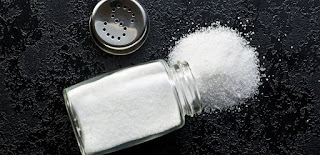Let's say you do your grocery shopping and leave the store with 5 bags of food. When you get to your car, one of the bags slips and falls to the ground. Unconcerned, you get into the car and drive off, leaving the fallen food behind.
Never, you say? Yet that is exactly what the average American family does every week.
Roughly 20% of the food we buy never gets eaten, according to the USDA. For a family of four, that comes to about $1,800 a year. In addition to the money you are throwing away, consider the resources wasted on producing that food, and the plastic packaging that ends up in landfills or, worse, dumped in the oceans. For example, producing a single pound of beef requires about the same amount of water as running your shower for 6 hours.
According to the National Resources Defense Council the reasons most commonly given for throwing away food include:
- Buying more than you need to "save money".
- Buying more than you need because smaller size packages were not available.
- An unplanned interruption left you without time to cook.
- You made too much when you did cook it.
- The food spoiled when you stored it.
Here are some tips for wasting less (and saving more).
1. Wasting less food begins before you even get to the grocery store. Live by the motto “Buy
what you need, and eat what you buy.” Always have a meal plan and a list
before going grocery shopping. Check your pantry and fridge before you
head to the store to make sure you’re buying what you really need.
2. Shop more frequently and buy less each time. Yes, it can be a little less convenient than a weekly trip to the grocery, but your produce will be fresher and go farther than if stored in your refrigerator all week.
3. Cook more with frozen fruits and vegetables if you aren’t sure you’ll be able to use up fresh foods before they go
bad. They are often more affordable than fresh and can be even
more nutritious.
4. Keep you pantry well stocked with staples like rice, whole grains and pasta, beans, flour, and herbs and seasonings. A well-stocked pantry can be the secret to whipping up a tasty meal from food that would otherwise go to waste.
5. Be creative with leftovers. They can often be transformed into an entirely new meal. The internet is your friend here if you need ideas based on the ingredients you have. For example, check out all these recipes for leftover turkey.
6. Store food properly. Don't just shove it into the refrigerator wherever you see some space. Use your crisper drawers to regulate humidity and temperature. Here is a guide to proper food storage.
7. Don't obsess over expiration dates. For the most part these are not mandated by regulation or law and are only the manufacturer's suggestion for when the food is at peak quality. Food is generally safe and tastes fine well after its expiration date. If it isn't moldy and smells fine, it probably is.
8. Its easy to forget what you have in your freezer and then discover it there months or even years later. Make sure to see what is already there each time you add more. Food that is "freezer burned" is normally perfectly safe to eat but it may taste "off" so use it in stews and soups that you can season well.
9. Lunch on leftovers. This could literally be eating leftovers straight out of the fridge, or making a new meal that uses leftovers as ingredients. Cook a little extra with this in mind.
10. If produce is going bad faster than you can eat it, preserve it by freezing, blanching and/or dehydrating.
Your preservation method will be different for the different foods
you’re working with, and you might even have to do a combination of them
to maintain quality.
The United States discards more food than any other country in the world:
nearly 80 billion pounds every year. That’s estimated to be 20-40 percent of the entire US food supply, and equates to about 219 pounds of food waste per person. Reducing food waste by just one-third would be enough to feed all of the 42 million Americans who face food insecurity. We waste $144 billion of food every year just in our homes alone.
Time for all of us to be aware and do our part.














